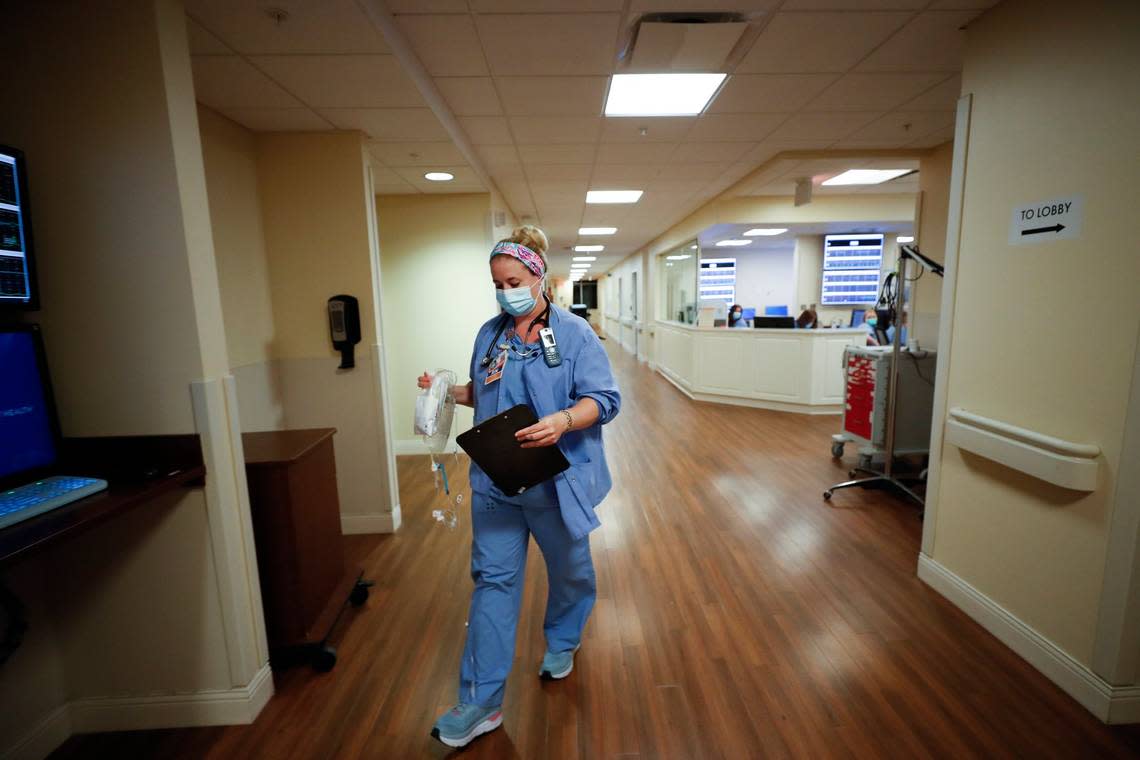Ky. hospital staffing shortages at ‘unsustainable’ level, hospital association says

With nearly a quarter of all nursing jobs unfilled, the staffing shortage plaguing Kentucky hospitals is at a critical level, according to a new study from the Kentucky Hospital Association.
Unveiling the results of the most comprehensive annual hospital workforce study to date on Thursday, KHA President Nancy Galvagni said one in four licensed practical nursing positions are vacant in Kentucky, as are one in six nursing assistant jobs. Overall, more than 22% of nursing jobs are unfilled.
“The commonwealth’s hospitals are facing the most critical staffing shortage in recent history,” Galvagni said at a news conference in Frankfort. “We are in an unsustainable position.”
These vacancies are driven in part by high turnover rates. The statewide rate for registered nurses leaving their jobs is 22%. But in some rural Eastern Kentucky counties, the RN turnover rate is as high as 50%, the report shows. Close to 5,400 nursing jobs are unfilled in Kentucky, and nearly 6,500 jobs are open across other specialty fields.
Overall, there are 13,423 vacant jobs in hospitals across the commonwealth, according to the study. There’s also a growing shortage of experienced nurses, with 14% of the workforce nearing retirement age, and 60% being between the ages of 21 and 40. By 2030, one-third of all psychiatric nurses and 27% of operating room nurses will have retired.
Kentucky’s health care worker shortage pre-dated the COVID-19 pandemic, but the strain the pandemic put on hospitals wholly exacerbated those staffing struggles. In December 2021, Gov. Andy Beshear signed an executive order declaring an emergency over the commonwealth’s severe dearth of nurses. At the time, more than 16,000 more nurses would be needed by 2024 to fill workforce holes.
The appeal of travel nursing jobs, which often pay substantially more, has put added financial stress on health care institutions that struggle to keep staff jobs filled. To bridge those funding gaps, hospitals in Kentucky spend 456% more now to try and retain workers than they did in 2019, according to the survey. In 2022, hospitals are projected to spend 1,014% more money on contract labor than in 2019. For premium pay, such as bonuses and overtime, the cost ballooned by 643% during that same time period — an “unsustainable rate of growth,” Galvagni said.
It’s a protracted problem that needs a long-term solution, she said. In the short-term, the association has asked the General Assembly to increase the reimbursement rate for Medicaid patients, who make up more than a third of all patients in any given day, she said.
KHA will also continue to meet with high schools to help coordinate the creation of LPN programs, to create career pipelines right out of school.
But if the shortages don’t lessen soon and costs continue to skyrocket, “our hospitals will have no other choice but to reduce services . . . and some might have to close their doors,” Galvagni said. “It doesn’t matter how many beds a hospital has if there aren’t enough professionals to staff them.”
This story may be updated.

 Yahoo Movies
Yahoo Movies 
